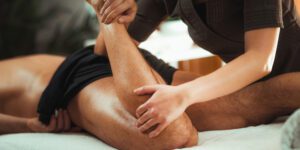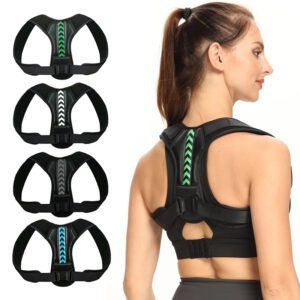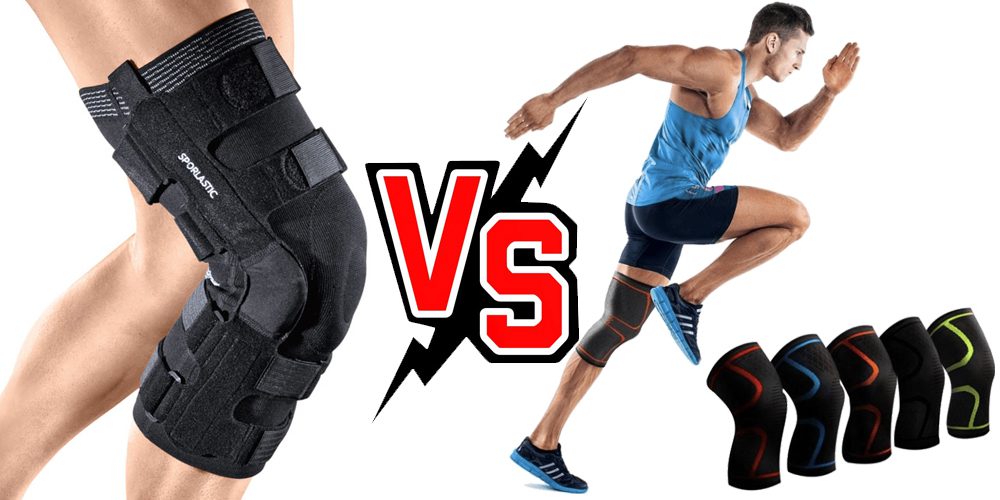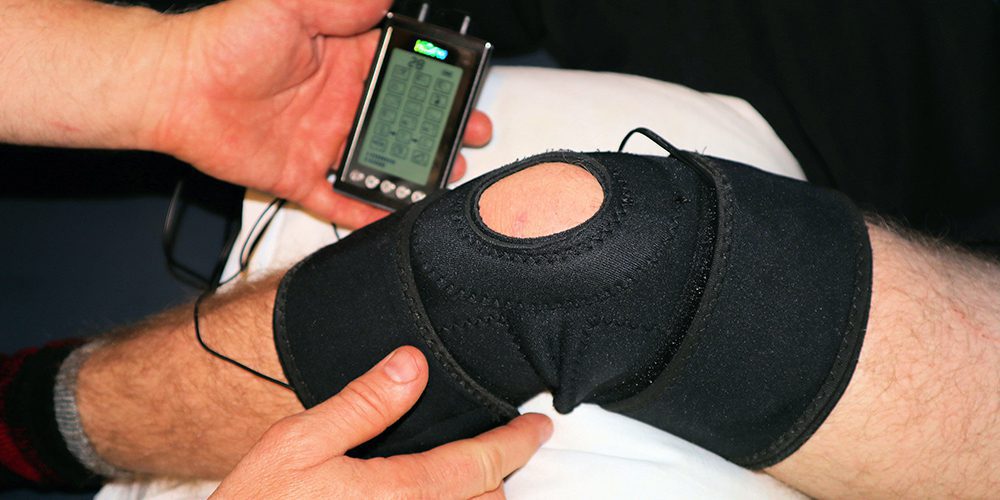Socks can do much more than simply keep your feet warm and dry; specific socks may enhance and prevent a variety of health issues.
Compression socks, or compression stockings, are special socks that provide mild pressure to your legs and ankles. They may aid in the proper flow of blood from your legs to your heart.
Compression socks have also been found to assist decrease leg and ankle swelling and discomfort. They apply pressure to the legs, which reduces extra fluid in the legs, inflammation, and heart blood flow by reducing swelling.
Do compression socks reduce swelling?
Many people are already aware that compression socks and stockings help those who have varicose veins, but what exactly are compression socks and how do they work for swelling issues in the feet and ankles? What kind of effect do they have on your general health?
Compression stockings are designed to reduce swelling in the feet, ankles, and lower legs. Compression stockings help to press these regions, which helps to stop fluid accumulation. This accumulation of liquid can be quite uncomfortable. There are a variety of degrees of compression in this hosiery. Your doctor will determine which one is ideal for you based on your individual symptoms, physical needs and history.
You can put on your compression socks as soon as you wake up and before you get out of bed. You should wear your compression socks all day to keep your legs from swelling. Take them off before you go to bed or before you take a bath or shower. To keep your legs from swelling while you sleep, it’s best to sleep with your feet higher than the level of your heart. If you follow these guidelines, you will be able to avoid swelling all day long.
Why do compression socks help swelling?
Wearing these stockings improves blood flow and pressure. Blood vessels in your legs relax as a result of the pressure these stockings apply to them. Blood is able to flow more freely through arteries that carry oxygen-rich blood to your muscles. The veins get a push from this, assisting in the return of blood to your heart.
Compression stockings can assist you avoid becoming weary and achy in your legs. They may also assist with the reduction of swelling in your feet and ankles, as well as help prevent and treat spider and varicose veins. When you stand up, they might prevent you from feeling faint or dizzy.
Because the blood is continuously moving, clots are more difficult to form and break away. If one forms and breaks free, it may travel with your blood and become trapped in hazardous places like your lungs. Clots also make it more difficult for blood to circulate around them, which can lead to swelling, discoloration, and other issues.
Who benefits the most from compression socks?
Compression socks are a fantastic way to reduce swelling and prevent injury. They’re very versatile, with several applications and uses, and are perfectly suited for all kinds of different people and situations including the following:
- Pregnant women. Bearing a child takes a great deal out of your body. As if constant fatigue and ever-present back pains weren’t enough, the extra weight and liquids your baby requires may cause swelling and discomfort in your legs. You could even experience swelling and pain in the pelvic region as well.
- People with blood circulation problems. Diabetes and varicose veins are only two of the conditions that can affect how blood flows through your body.
- Athletes. People who regularly exercise or play sports may experience leg fatigue and pain. This is especially true if you run long distances, where the cumulative pressure of each step you take can cause swelling in your lower legs.
- People with health conditions like heart disease, high blood pressure, and kidney disease.
- People recovering from surgery. It’s not unusual to experience some swelling after a surgical procedure. Compression stockings might decrease how much you swell and how long the swelling lasts.
- People who take a lot of long plane or car rides, as these activities can cause leg pain and discomfort from both the compression that occurs naturally in these vehicles as well as from blocked blood flow due to gravity.
- People who work long hours on their feet and suffer from leg cramps and pain as a result of not moving around enough.
- People who are required to stay in bed. Generally, when you’re in bed for many hours, your legs tend to swell.
- Nurses, waiters, truck drivers or pilots. These occupations involve hours of standing or sitting, which can increase how much your legs swell.
How long does it take for compression socks to reduce swelling?
As a general guideline, use as directed to get the most out of compression therapy. Compression garments may be worn all day long by those who sit at a desk job. People who engage in physical activity may wear compression apparel for only a few hours each day.
If you have trouble sleeping because of blood pooling, take a break from the compression garments by raising your legs above your heart while sleeping. This will increase circulation while allowing your skin to breathe.
The relief from your condition is immediate. However, it might take a few days of consistent usage for you to notice a significant reduction in edema. To get the best results, wear your compression garment first thing in the morning. When your limbs are least swollen, this is when you should apply the compression socks. Your legs, ankles and feet swell during the day and reach their peek swelling in the afternoons. When wearing compression socks, you’ll keep swelling low and in check during the whole day.
Visible improvements vary from one person to another. Every body is unique and reacts in a different way to compression therapy. Some people see results in as less as one day while others may need to use them for 6 weeks before a reasonable result in the appearance of your veins can be observed.
How to wear compression socks with swollen feet or legs
I have already mentioned that your best practice is to put your compression socks on when your legs, feet or ankles show the least swelling. This is usually right at the beginning of the day when you wake up. However, in some instances, you might want to put them on later. Here are some tips on how to wear them later in the day:
- Don’t fold or roll your compression socks into a ball. This makes the garment too tight, which can restrict blood flow. Keep them straight and try to put them on this way.
- Make sure to get the socks in the right size. If they’re too short or too long you will have more problems putting them on or they won’t give you the results you’re looking for.
- Smooth out and make it lie flat (no wrinkles!) against your skin as you put on your garment. This prevents skin irritations and discomfort.
- Jewelry and clothing don’t mix well. Remove them. They might snag and cause tears in your clothing while putting them on.
- Begin by pulling your socks up the heel of each leg. To assist with grip, you may use rubber kitchen gloves instead.
- Don’t tug on the tops excessively to keep them in good condition.
- Your socks may be worn as many times as you need. If your doctor has instructed you to do so, follow his or her directions.
- Remove them when bathing or showering.
- You may wear your usual shoes with compression socks and sleeves.
- Various gadgets on the market can assist you to wear them and remove them.
Home remedies that help with swelling in feet, ankles and legs
Have you ever gazed down at your feet and had a difficult time recognizing them because they were swollen so much? This happens most often after a lengthy journey, prolonged sitting or standing, during pregnancy, or after surgery.
Swelling around the feet and ankles may cause discomfort and, in some cases, prevent movement. Nonetheless, fluid retention in one or both of your ankles, feet, and legs is common and generally not a sign of serious concern. Treatment is frequently so easy that you can do it yourself. Here are some ideas to get you started.
- Wear compression socks / stockings. This one is the obvious one and you might have thought about that already yourself. At least if you have read the complete article.
- Elevate your feet and legs. The force of gravity pulls towards the ground, so raising your legs higher than your heart helps reduce swelling. If you raise your leg higher than your heart, the pull of gravity will bring fluid to your leg toward your heart. The longer and more severe the swelling has been, the longer and more frequently you need to elevate your feet or legs.
- Do some exercises. When you sit or stand for lengthy periods, fluid builds up in your legs and lower extremities. These behaviors are not good for your health. While seated or standing, flex your ankles, knees, and thighs; move your knee and thigh muscles, retrace the course of your feet!
- Consider Magnesium Supplements. Take 200-400 mg of magnesium as a dietary supplement. This might assist with water retention and pain reduction. While these are not prescription drugs, before starting any therapy, talk to your doctor.
- Drink plenty of water. Drink eight to ten glasses of water each day. Although it may appear counterintuitive, drinking adequate fluids is beneficial in reducing swelling. When your body isn’t hydrated enough, it retains the moisture it does have.
- Lose weight. Weight loss does help with constant swelling. Go on a diet if you feel like you could lose some pounds.
- Use Epsom Salt. Fill the tub with epsom salt and have a warm bath. For about 15 to 20 minutes, soak your legs in this bath. This relieves pain and swelling without requiring expensive prescription medications. Use your hands to check the water and protect your feet from cold temperatures if you have diabetic neuropathy on your feet.
- Talk a short stroll or walk every hour. Don’t stay seated for too long. This causes your legs and feet to swell. Instead set a timer on your mobile phone and make some steps every hour. You can even walk around in your office when you’re on a call or if your current task doesn’t require for you to sit before your screen.
- Try to avoid carbohydrates and salt. Despite their vital function in recharging and restoring depleted energy reserves, carbohydrates have a negative reputation. Some persons, on the other hand, have unpleasant responses to eating too many carbohydrates. After consuming carbs, some people develop swelling in their hands, faces, feet, and ankles.
Can you sleep in compression socks?
Yes, you can. Is it true that compression socks help circulation all day, and do they help circulation all night as well? Compression garments such as socks and tights are usually used during the day, but there are certain circumstances when sleeping in compression socks is acceptable.
The use of graduated compression socks as a therapy for sleep apnea is only one example of specialized application. People who have orthostatic hypotension, which is low blood pressure when standing up due to an illness or injury, may also benefit from wearing socks or tights with graduated compression at night. Orthostatic hypotension is a condition in which standing up from reclining causes dizziness or loss of consciousness. Those with orthostatic hypotension are more likely to faint as soon as they exit their beds. It’s an awful way to begin your day to fall to the floor.
It’s fine to sleep in your compression socks. You may even prefer to wear compression socks all day if you like. However, you should not wear the same compression socks 24 hours a time, day after day, night after night. You should wash your legs at least once a day, especially if you have venous insufficiency-related skin issues, and it’s always a good idea to replace your socks on a regular basis as part of good personal hygiene. During the day, you should ideally wear one pair of compression socks and one pair of compression socks while sleeping.
Conclusion
If you’ve been struggling to walk comfortably and experience swelling in your feet, it might be time for a new pair of compression socks. Compression socks work by applying gentle pressure on the leg that helps decrease inflammation and fluid retention; which can lead to pain relief and improved mobility. You may need to try different brands before finding one that is comfortable enough for extended wear but there are many styles available online today like thigh-high or knee-high options with extra padding at the ankle if needed too.
Check out the options we have here at BaronActive and visit our store. These socks have already helped thousands of people from all around the world. And they can for you too.
If you found this article helpful, please leave us a comment below and share your experiences, your favorite compression socks brand or your story with our community.























